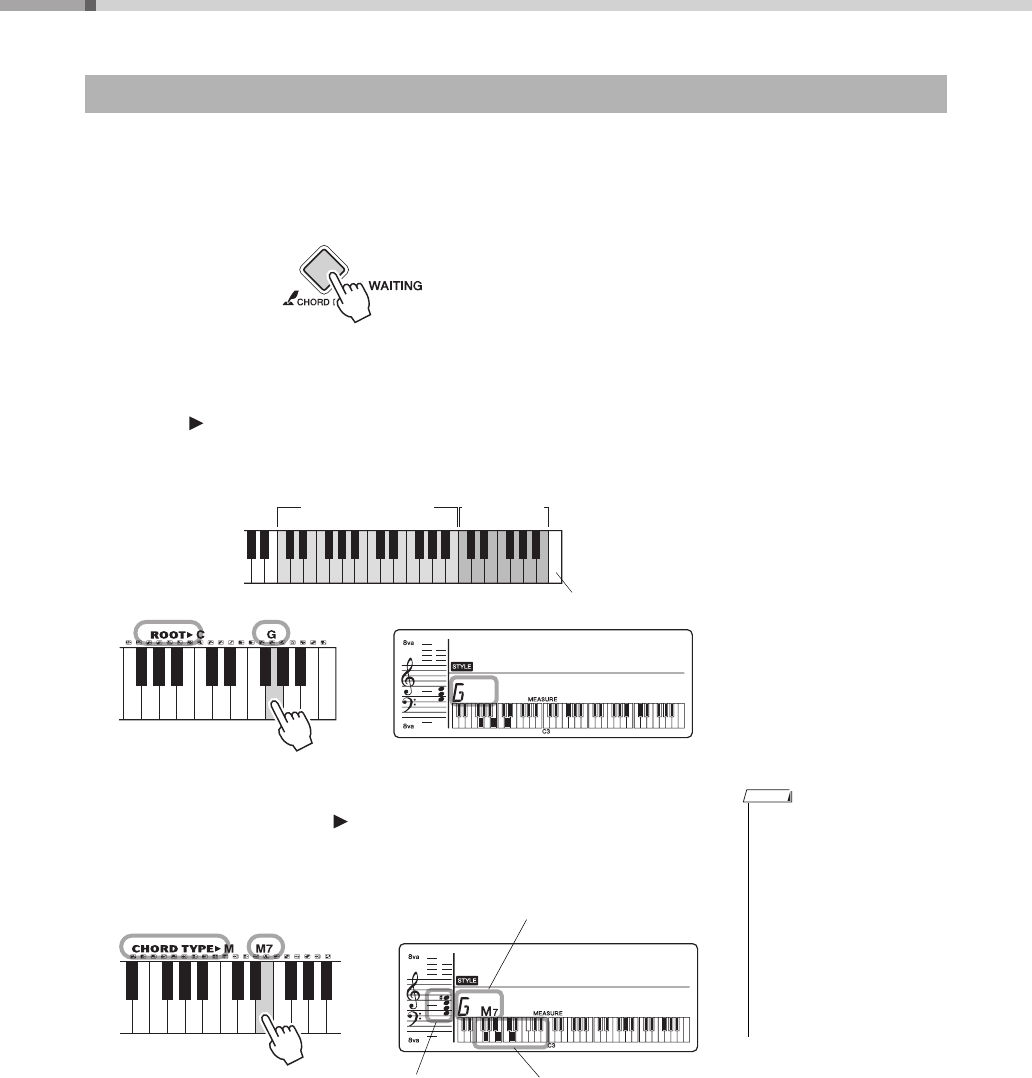
Play with a Style
PSR-E233/YPT-230 Owner’s Manual
20
The Dictionary function is essentially a built-in “chord dictionary” that shows you the individual notes of chords.
This is convenient when you know the name of a certain chord and want to quickly learn how to play it.
1
Press and hold the [3 WAITING] button for longer than a second.
“Dict.” will appear in the display.
2
As an example, we’ll learn how to play a GM7 (G major seventh)
chord. Press the “G” key in the section of the keyboard labeled
“ROOT .” (The note doesn’t sound.)
The root note you set is shown in the display.
3
Press the “M7” (major seventh) key in the section of the keyboard
labeled “CHORD TYPE .” (The note doesn’t sound.)
The notes you should play for the specified chord (root note and chord type) are
shown in the display, both as notation and in the keyboard diagram.
To call up possible inversions of the chord, press the [+]/[-] buttons.
4
Try playing a chord in the auto accompaniment range (refer on
page 17) of the keyboard, checking the indications in the display.
When you’ve played the chord properly, a bell sound signals your success and
the chord name in the display flashes.
Looking up Chords Using the Chord Dictionary
Hold for longer
than a second.
Dict.
001
Keys for chord type
dictionary
Keys for root
dictionary
The highest key
• Major chords are usually
indicated by the root name
only. For example, the indi-
cation “C” in a score refers
to a “C Major” chord. To look
up the fingering for a major
chord press the root key and
then the M chord type key.
• These chords are not shown
in the Chord Dictionary func-
tion: 6(9), M7(9), M7(
#
11) ,
b
5, M7
b
5, M7aug, m7(11),
mM7(9), mM7
b
5, 7
b
5, sus2
NOTE
Dict.
001
Notation of chord
Chord name (root and type)
Individual notes of chord
(keyboard)


















